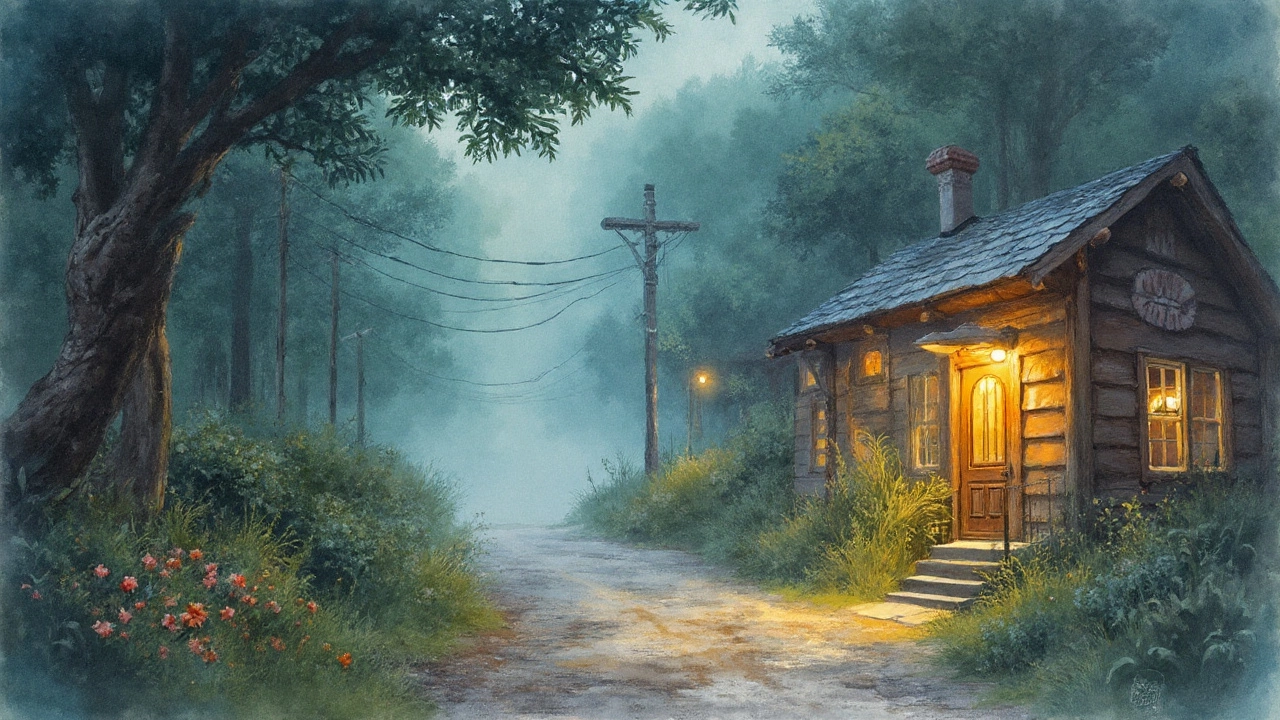TL;DR: Quick answer and key takeaways
- Is The Great Alone historical fiction? Yes-most readers and many booksellers treat it that way. It’s set mainly from 1974 through the early 1980s, which now lands 50+ years in the past.
- By the Historical Novel Society’s rule of thumb (events >50 years earlier or beyond the author’s firsthand adult experience), it qualifies in 2025 on the 50-year timeline.
- Some libraries still shelve it simply as “Fiction” or “Literary/Contemporary,” because at publication (2018) it hadn’t hit the 50-year mark.
- If you want a survival-driven, Alaska-set period novel with family drama and Vietnam War aftershocks, you’re in the right aisle.
- Content note: domestic violence, PTSD, isolation, and survival peril feature strongly.
What counts as historical fiction? The rulebook-and a quick test
Genres get messy fast, so it helps to use a simple rulebook used by editors, librarians, and the Historical Novel Society (HNS). Their widely cited definition says a novel typically counts as historical fiction if its primary action takes place more than 50 years before it’s written, or it’s written by someone who didn’t live through the events as an adult. That standard exists to make sure the story is built on research rather than the author’s direct, lived adult memory of the era.
There are exceptions and edge cases. Retailers tag books based on what sells best; libraries file by author surname first and only sometimes sub-shelve by genre; readers tag by vibe. That’s why you’ll see the same book labeled “Historical,” “Literary,” or “Women’s Fiction” in different places. But as a working rule, the 50-year guideline is the cleanest way to decide.
Want an easy, no-fuss way to decide if a novel should be treated as historical fiction for your purposes? Use this five-step test.
- Check the primary timeline: Is the core story set mainly in a clearly past era (not just a few flashbacks)?
- Apply the 50-year rule: Are those events 50+ years before today? If you’re cataloging at time of publication, use the publication year instead.
- Look for historical scaffolding: Does the plot lean on period-specific realities-laws, wars, tech limits, social norms-that would change the story if moved to the present?
- Scan the author’s note or acknowledgments: Is there evidence of research into period details (climate, gear, transport, policy, slang)?
- Cross-check professional signals: How do major reviewers describe it? How do bookstores and libraries tag it? You don’t have to agree, but it’s a useful tiebreaker.
One more nuance because it trips people up: the HNS definition cares about when the book was written relative to the period it covers. In 2018, the 1974 setting was roughly 44 years earlier, so some purists hesitated to call it historical. It’s 2025 now; 1974 is 51 years ago. By the calendar, the book fits the 50-year criterion today, even if early shelving didn’t.

Where The Great Alone fits: setting, timeline, and themes
Kristin Hannah’s The Great Alone (2018) plants you in Alaska starting in 1974 and follows the Allbright family-teen Leni, her mother Cora, and her father Ernt, a Vietnam veteran-through several years in a remote coastal community. That timeline matters. It’s not just a scenic backdrop; the era shapes every choice and consequence. No mobile phones. CB radios, weather radios, and word of mouth. Bush planes and boats as lifelines. A tight-knit, suspicious-of-outsiders town where skills and favors matter more than cash.
Here are the period anchors that make the book feel historically grounded:
- Post-Vietnam fallout: Ernt’s PTSD and the wider social unease of the mid-70s are central to the family’s unraveling. The war and its aftershocks are not scenery; they’re plot drivers.
- Pipeline-era Alaska: The Trans-Alaska Pipeline boom (mid-70s) changed economics, labor patterns, and town dynamics. Hannah leans on that shifting ground-prices, temp work, and the “boomtown” effect.
- Off-grid reality: In the 70s, homesteading meant wood stoves, root cellars, and stockpiled supplies. Bad planning could kill you by February. That survival logic underwrites the entire book.
- Community codes: In small, isolated places, law enforcement is distant, and social norms do the heavy lifting. That matters for scenes of domestic abuse and how neighbors decide when to step in.
Does Hannah get the details right? Readers who know Alaska often say the book captures the light-and-dark extremes, the brittle danger of winter, and the way a thaw can trick you into bad decisions. Tools, tasks, and seasonal rhythms feel researched: smokehouses, fishing, storing winter wood, canning, sewing, and the delicate dance with bears and ice.
Genre-wise, The Great Alone lives at the crossroads of survival novel, family drama, and historical fiction. If you come for pure history in the sense of real political figures, front-page events, or recreated battles, this isn’t that. If you come for a deeply period-specific family story that only works in the 70s Alaska bush, that’s exactly what it is.
To show how it sits among Kristin Hannah’s backlist, here’s a quick comparison:
| Title | Primary Setting | Era | Historical-ness | Core Vibe |
|---|---|---|---|---|
| The Nightingale | France | WWII (1939-45) | Unambiguous historical | War, resistance, sisters |
| The Four Winds | US (Texas/California) | Great Depression/Dust Bowl | Unambiguous historical | Migration, hardship, motherhood |
| The Great Alone | Alaska (coastal/bush) | 1974-early 1980s | Now clearly historical by 50-year rule | Survival, PTSD, domestic violence |
If you like the intensity and moral weight of The Nightingale and The Four Winds, you’ll recognize the same emotional power here-just pointed at a different kind of frontier.
How it’s classified on shelves-and a handy checklist
Here’s why you might see The Great Alone in different places depending on where you look:
- Bookstores: Staff often slot Hannah under “Historical Fiction” because that’s where her biggest titles have landed and where her readers browse. The Great Alone fits the customer journey, even if it’s a later-20th-century setting.
- Libraries: Many public libraries file all adult novels alphabetically by author; genre is a tag, not a shelf. Catalog records may include subject headings like Alaska-Fiction, Veterans-PTSD-Fiction, Domestic fiction, which nudge, but don’t dictate, a “Historical” label.
- Review outlets: You’ll see “historical” used loosely for anything pre-digital with thick period texture. Some publications called The Great Alone literary or contemporary on release because 1974 felt “recent” in 2018. Time has since shifted that perception.
If you’re choosing a category for a blog, club pick list, or inventory, use this short checklist:
- Is the main action anchored in 1974-early 1980s Alaska?
- Do plot turns depend on that era (no phones, remote policing, pipeline boom, post-Vietnam trauma)?
- Is the book now at least 50 years removed from its starting year? (Yes-1974 is 51 years ago in 2025.)
- Would moving the story to the 2020s break it? (Yes-technology and social services would change everything.)
If you answered “yes” all the way down, call it historical fiction with a straight face. If you’re building a sub-shelf for “recent historical” or “late 20th-century,” that’s even cleaner for readers who like modern-history settings.

Reader fit, content notes, and what to read next (plus mini‑FAQ)
Reader fit
- Best for: Readers who crave high-stakes survival, complicated family bonds, and moral choices that hurt. If you loved Eowyn Ivey’s The Snow Child or Kristin Hannah’s The Four Winds, you’re in the pocket.
- Not ideal for: Readers highly sensitive to domestic violence and coercive control. The book portrays abuse directly and repeatedly. Know your thresholds.
- Book clubs: Excellent pick if your group likes knotty ethics and “What would you have done?” debates. Plan time-there’s a lot to unpack.
- Age range: Adult. Mature older teens could handle it, but the themes are heavy.
Pro tips for enjoying the Alaska setting
- Keep a simple map handy. Knowing where Homer, Anchorage, and coastal inlets sit relative to each other makes the logistics click.
- Track the seasonal clock. In Alaska, summer equals long light and frantic prep; winter equals darkness and hazard. The plot syncs with that rhythm.
- Listen on audio if you like atmosphere. The cadence of place names and weather reports lands harder through narration.
Similar reads (different flavors of cold, grit, and history)
- The Snow Child by Eowyn Ivey - Alaska, 1920s; magical-realist touch but grounded in homesteading reality.
- To the Bright Edge of the World by Eowyn Ivey - Late-19th-century Alaska expedition; journal form, stark beauty.
- The Shipping News by Annie Proulx - Newfoundland, late 20th century; not historical by the 50-year rule across all chapters, but similar Atlantic cold, community politics, and survival vibe.
- The Nightingale by Kristin Hannah - WWII France; if you want Hannah in unmistakable historical mode.
- The Four Winds by Kristin Hannah - Dust Bowl America; migration and resilience under extreme hardship.
Mini‑FAQ
- Is The Great Alone based on a true story? No. It’s fiction. But it pulls from real conditions and patterns-Vietnam-era trauma, pipeline boom impacts, and Alaska homesteading culture.
- Is Kaneq a real town? No. It’s a fictional coastal community that feels like a composite of real places on the Kenai Peninsula and around Kachemak Bay.
- Why do some people say it’s not historical? When the book came out in 2018, the 1974 start date was under 50 years earlier. Some purists prefer to wait. Time has now tipped it over the line.
- Does “historical fiction” mean heavy on famous events? Not necessarily. The label covers any story where the past era’s conditions shape the plot. This one is more “lived history” than headline history.
- How accurate is the survival detail? Readers familiar with Alaska often praise the seasonal prep, tools, and risk calculus. As with any novel, some bits are streamlined for narrative pace.
Next steps by scenario
- I need a quick yes/no for shelving or a school list: Yes-shelve/tag it as historical fiction (late 20th century, Alaska; 1970s-80s).
- I’m picking for a sensitive reader: Flag domestic violence and psychological abuse. Consider The Snow Child as a gentler Alaska alternative.
- I want “more like this” but different region: Try Where the Crawdads Sing (marsh survival and isolation, US South; not strictly historical across its whole timeline) or Cold Mountain (Civil War, classic survival and return).
- I’m assigning it in a course: Pair with a brief primer on the Trans-Alaska Pipeline era and Vietnam veteran reintegration to give students historical footholds.
Bottom line: If you’re here to pin the genre with confidence, go ahead-call The Great Alone historical fiction. It was borderline at publication; the calendar and its period-dependent plot have since settled the argument.

